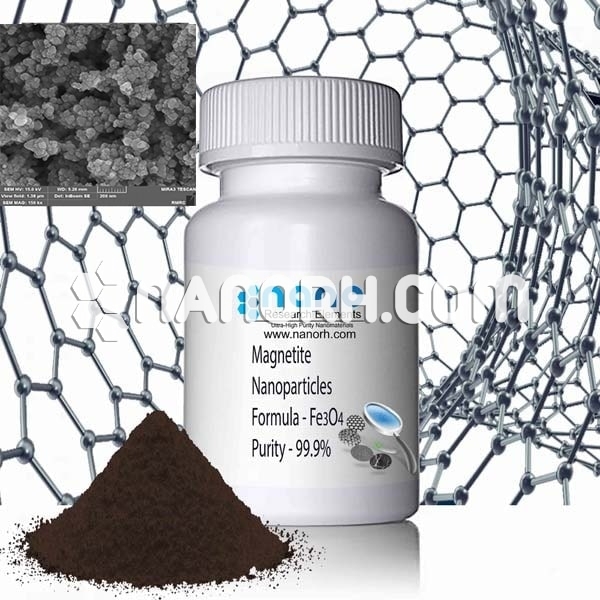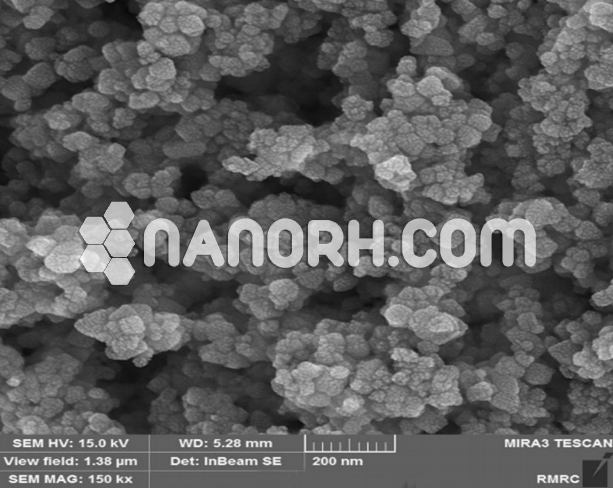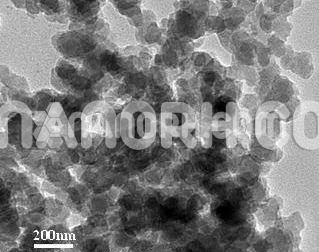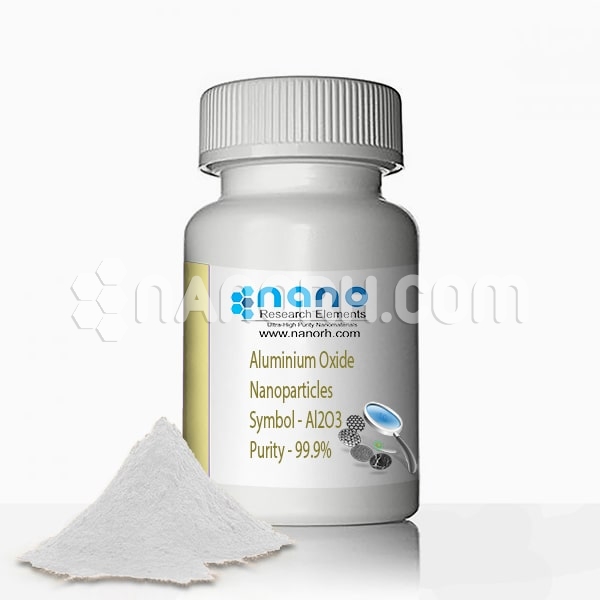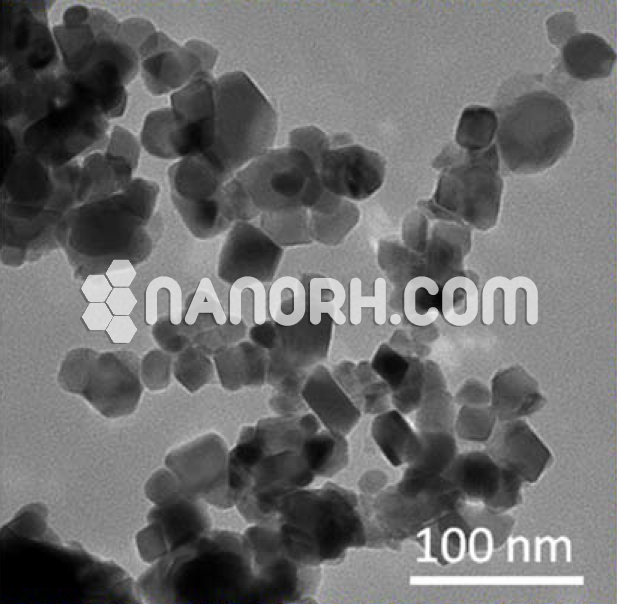| Magnetite Nanoparticles | |
| Product No | NRE-3037 |
| CAS No. | 1317-61-9 |
| Formula | Fe3O4 |
| APS | <100nm (Can be Customized) |
| Purity | 99.9% |
| Color | Black |
| Molecular Weight | 231.53 g/mol |
| Density | 5 g/cm³ |
| Melting Point | 1597 °C |
| Boiling Point | 2,623 °C |
Magnetite Nanoparticles
Magnetite Nanoparticles is the most common and utilized form of naturally occurring iron oxides, with the chemical formula Fe3O4. It is characterized by a crystalline cubic inverse spinel structure, in which ferrous ions occupy half of the octahedral lattice sites and ferric ions occupy the other half of the octahedral lattice sites and all the tetrahedral lattice sites Magnetite structures in the nano-range have attracted particular interest due to their unique properties when reduced to several nanometers. Even though most of the studies focus on magnetite nanoparticles, various other morphologies can be obtained. MNPs were reportedly synthesized as cubes, rods, disks, tubes, plates, hexagons, octahedrons, truncated octahedrons, tetrahedrons, octopods, tetrapods, rings, flowers, concaves, etc., in either solid, hollow, or porous forms. Factors including shape and size distribution are fundamental determinants of Magnetite Nanoparticles chemical and physical properties, which further dictate their functionality. When the particle size is very small (so that each particle becomes a single domain), magnetite exhibits unusual magnetic properties, called super paramagnetism. Specifically, at a certain temperature, in the absence of an external magnetic field, MNPs have zero magnetization on average. Their magnetic susceptibility is very high in this state, allowing them to be magnetized by an external magnetic field These magnetic properties make Magnetite Nanoparticles suitable for a wide range of applications, such as magnetic resonance imaging (MRI) contrast agents, magnetic fluids, hyperthermia therapy, bio-sensing and diagnosis ,controlled and targeted drug delivery, cancer treatment, data storage, catalysis, magnetic paints and inks, microelectronics, high density magnetic recording, magnetic refrigeration, batteries, or sorbents for pollutants removal. MNPs used for biomedical purposes usually require corona protection and are either functionalized or surface coated by polymers, metals, or organic and/or inorganic stabilizing agents. MNPs based carriers can transport a specific load directly to the target site, with no effect on the body.

